Members of Austin City Council voted unanimously last night to pass a resolution “relating to comprehensive strategies and immediate and longer-term actions to create a safer Sixth Street environment for all,” which directs city staff to study potential design interventions and other changes that could improve public safety in the East Sixth Street bar district that’s seen a number of recent violent incidents despite being perhaps the city’s single most heavily-policed area.
The most drastic possible design change raised by the resolution and its major sponsor, Council Member Kathie Tovo, is the proposal of reopening the street to car traffic on weekends — the area generally recognized as the East Sixth Street entertainment district has been closed to cars at night between Red River and Brazos Streets from Thursday through Sunday since the 1990s.
This isn’t the only intervention on the table, but it would certainly be the most instant visible change, and the appearance of the concept this week saw an immediate horrified reaction from more urbanism-minded Austinites concerned that the reintroduction of traffic to the district would simply inflict vehicular violence on the street’s weekend pedestrian crowds atop the existing rash of gun violence.
Let me take an educated guess. No.
Would Opening Sixth Street To Cars On The Weekend Make It Safer? One Council Member Wants To Know. https://t.co/yDeN9kYYC8
— David Wenger (@wengernation) July 29, 2021
It’s certainly a proposal standing in an almost comically precise opposition to our generally urban-oriented perspective regarding the value of pedestrianized streets, and we’ve had plenty of philosophical disagreements with Council Member Tovo’s approach to downtown’s growth in the past, but we’re forced to reluctantly admit there might be some merit to the notion of cars on Sixth Street in a limited sense, though in any case the street’s problems stretch far deeper than infrastructure.
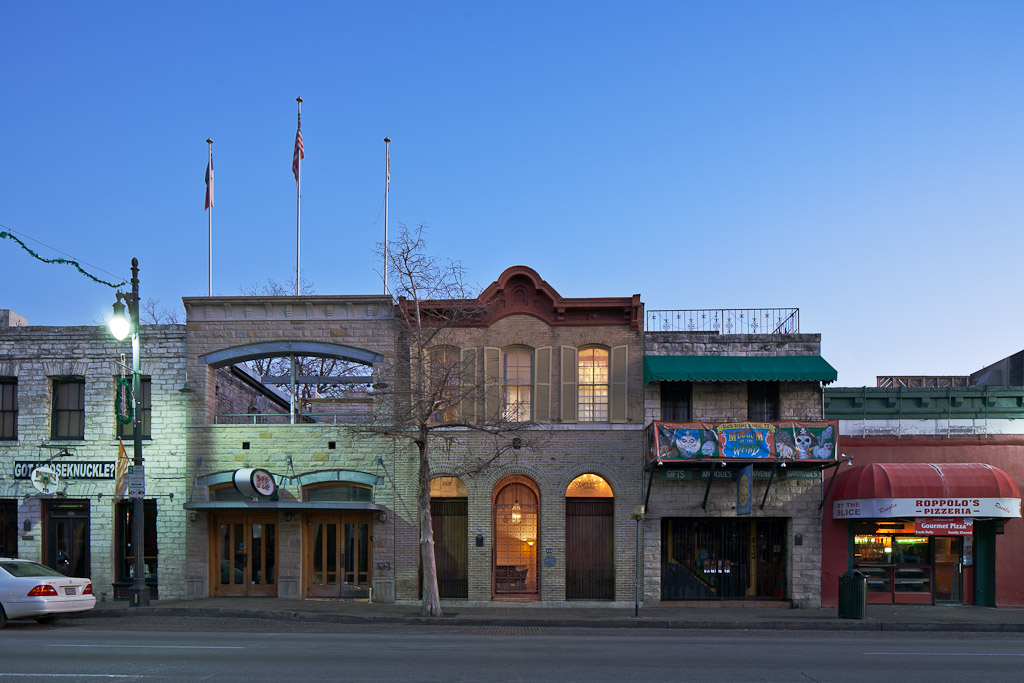
The Graeber House at 410 East Sixth Street is one of the area’s few residences. Photo by Patrick Wong
It was repeatedly emphasized by Tovo and others during yesterday’s council meeting that simply reopening the street to cars without other changes doesn’t appear to be on the table. The resolution is more broad in its recommendation for researching solutions to recent public safety challenges on Sixth with input from stakeholder groups including Austin’s police and fire departments along with EMS and local business owners, but the underlying tone of the whole process appears to be finding ways to prevent Sixth Street’s large weekend crowds from attaining the sort of critical mass thought to be a precursor to outbreaks of violence, sparked by the presence of large groups loitering on the pedestrianized street after the bars close.
Even this basic assumption should likely receive further study, since the dynamics of some recent shootings here appear to be more complicated in their origins, but the idea of design interventions that break up large open spaces on the street, whether that street’s open to cars or not, could take us in the right direction — Council Member Tovo mentioned the potential of installing temporary seating in the center of the street during its pedestrianized hours, along with the much easier fix of increased lighting infrastructure throughout the district.
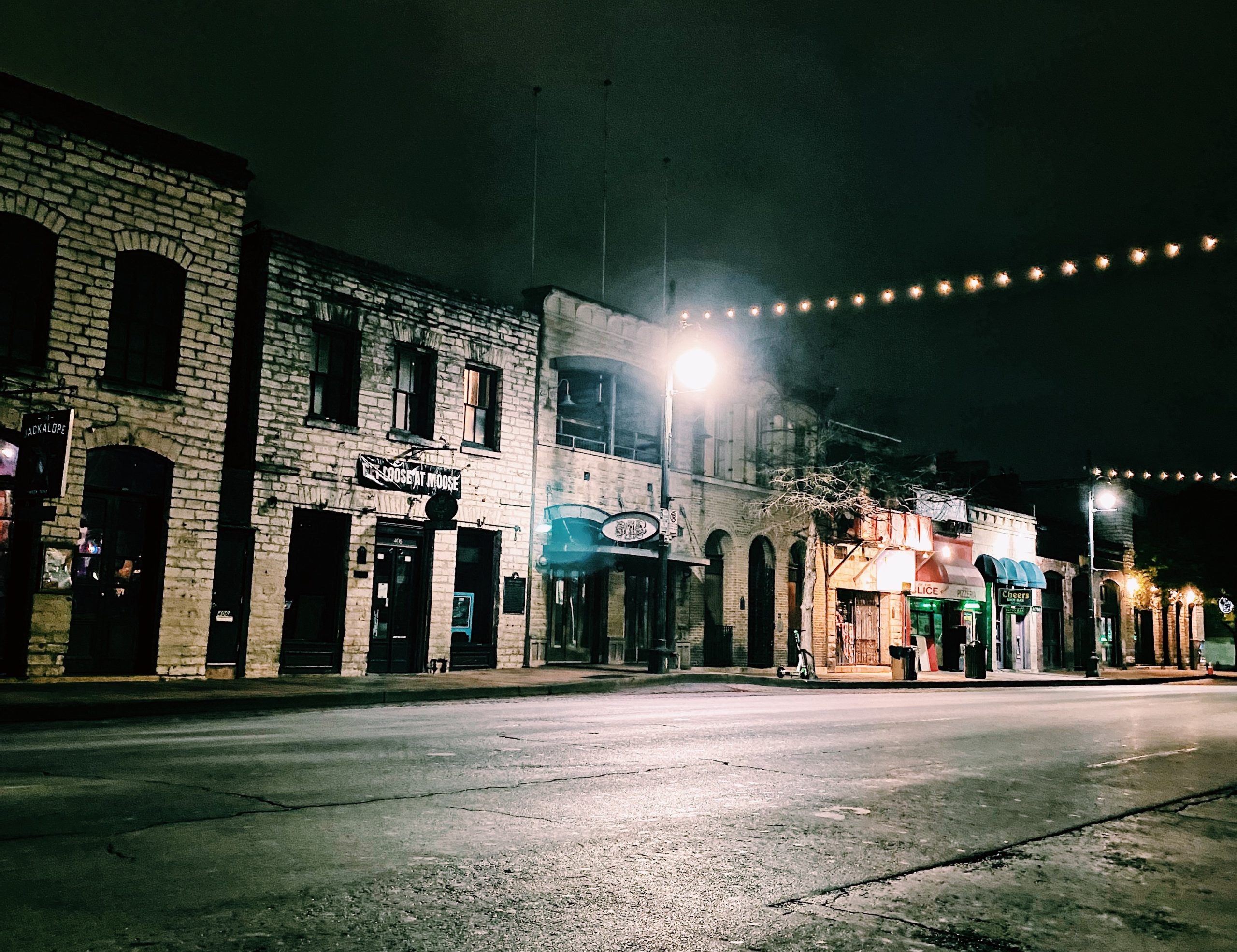
Shuttered bars on Sixth Street in downtown Austin during the early days of the pandemic. Photo by Andrei Matei.
We’d certainly prefer this approach if it meant we could increase the street’s safety while keeping it fully open to pedestrians, but if the research process sparked by this resolution does eventually decide to open Sixth Street to traffic, there’s a right way to do it. First, this stretch of the street would need to be converted from one-way to two-way traffic — we’ve done this on many surrounding one-way streets, and it’s provided clear benefits in terms of reduced speeds and more efficient navigation.
Sixth Street is four lanes wide in this area, but a reopened version would need to be reduced to only two central lanes, one in each direction. We’d line these lanes with crash-resistant concrete “Jersey barriers,” thus reclaiming the lanes on either side for additional pedestrian space and protected bike lanes — we’ve heard actually widening the sidewalks on either side of the street might be a bit challenging because of the area’s historic status, but this would of course be a better permanent solution.
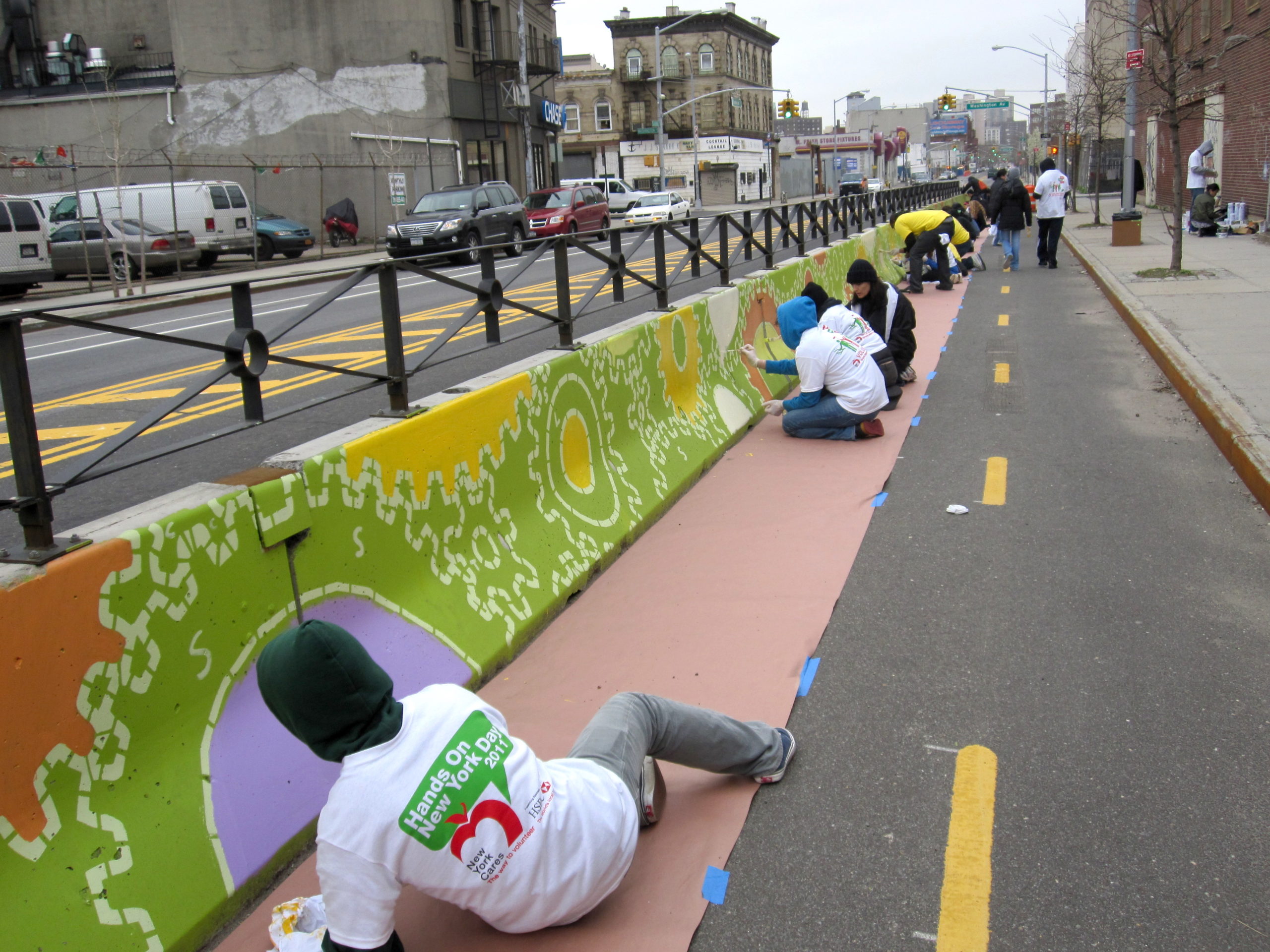
Now we’re talking. Image: nycstreets / Flickr Creative Commons
Keep in mind that unlike other parts of downtown, there are no parking lots or parking garage entrances along this area of Sixth Street, so the argument that reopening a portion of the street to traffic would increase drunk driving doesn’t seem as convincing as it otherwise might — at the moment, visitors either park at facilities blocks away or utilize ridesharing services, conditions that wouldn’t change with a hypothetical reopening to traffic. If designed properly with designated ridesharing drop-off zones, a partial reopening of the street could arguably decrease drunk driving, due to the convenience of rides starting and ending directly inside the district and not requiring the additional walk to outside parking.
Whether or not the addition of traffic as a physical barrier to crowd size would actually measurably decrease violent incidents here, the problem with Sixth Street isn’t really crowds or cars — it’s the types of businesses that entirely dominate the district, namely identical bars run by a handful of owners with a financial interest in keeping the street’s environment precisely how it is, since otherwise their poor stewardship of one of downtown’s most dense collections of deeply historic buildings might eventually attract enough negative attention to finally galvanize change.
We’ve long maintained that the more mixed assortment of businesses you’d once find on the street to its great benefit until things went south in the mid-1990s would go a long way towards keeping an eclectic crowd in the area, a broader clientele less inclined to the single-minded pursuits of reckless drinking and subsequent violence — we’re very glad to see other local voices recently taking a similar tone on the subject.
Beyond the issue of cars, we were thrilled to hear CM Tovo mention the possibility of looking into methods of attracting a more diverse business environment to this part of the street, though the particulars of those incentives are unknown for the moment. Per Council’s discussion, we’ll likely hear more about possible fixes later on this year — just remember that Sixth Street has changed its tune quite a few times since 1839, and there’s absolutely no reason we can’t change it again.
Related
"really" - Google News
July 30, 2021 at 08:17PM
https://ift.tt/3BYvKN9
Is There Really a Case for Reopening Sixth Street's Weekends to Cars? - TOWERS Austin
"really" - Google News
https://ift.tt/3b3YJ3H
https://ift.tt/35qAk7d
Bagikan Berita Ini
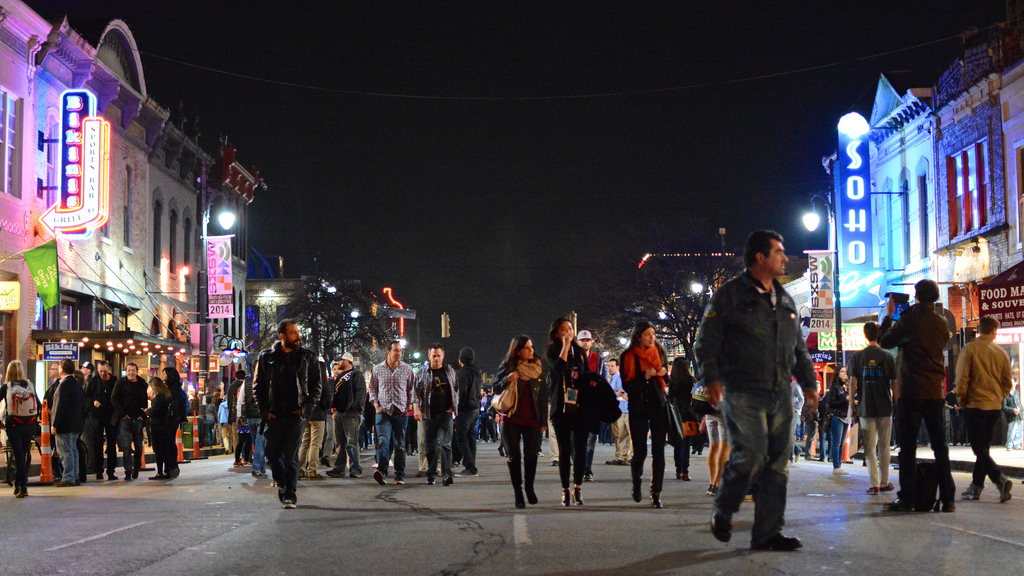
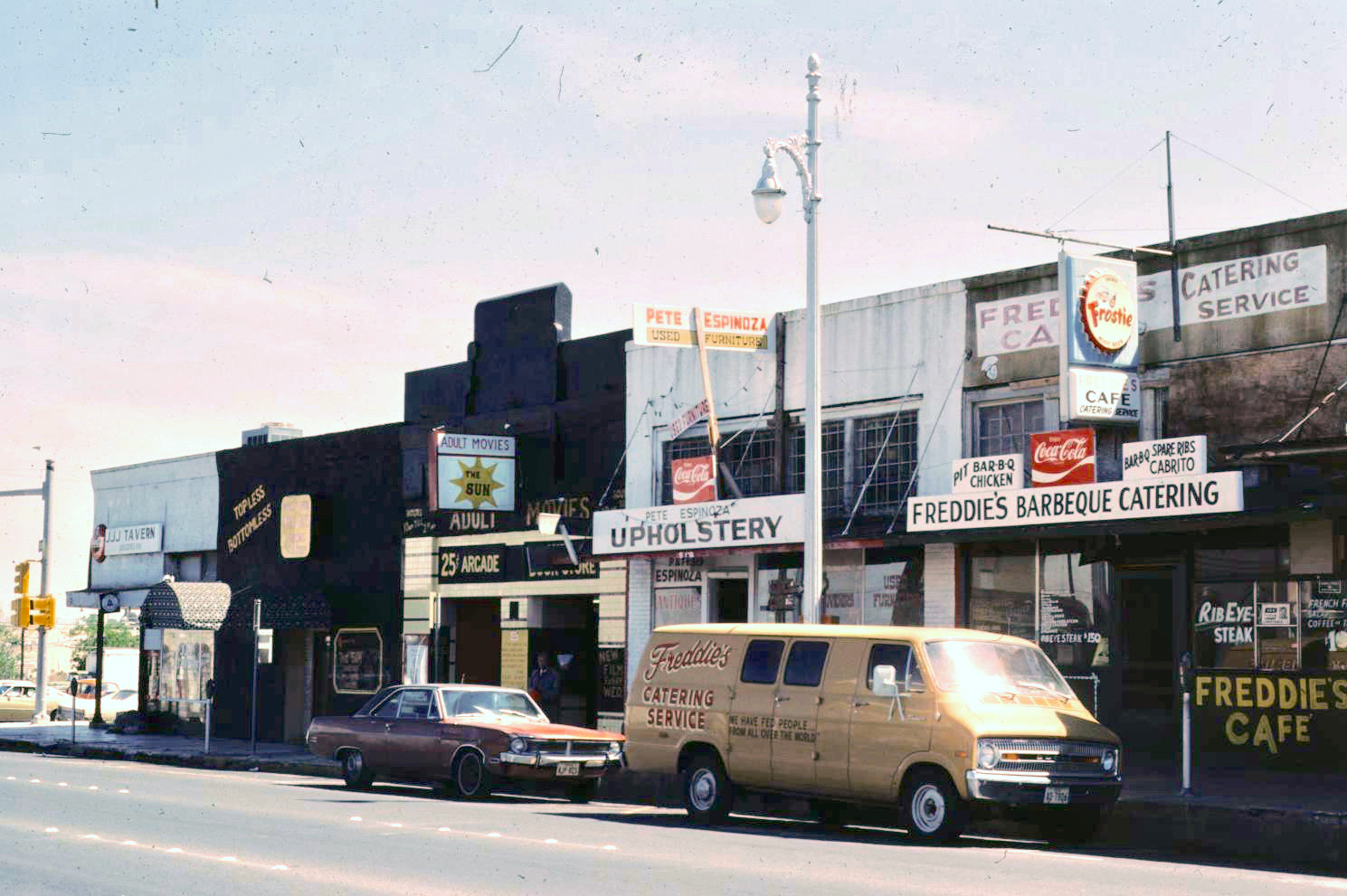














0 Response to "Is There Really a Case for Reopening Sixth Street's Weekends to Cars? - TOWERS Austin"
Post a Comment